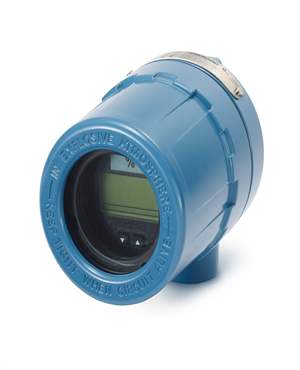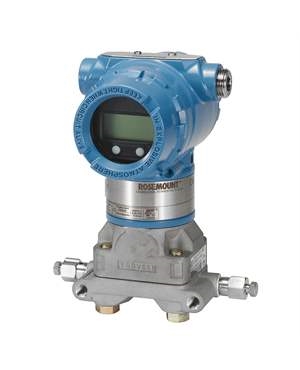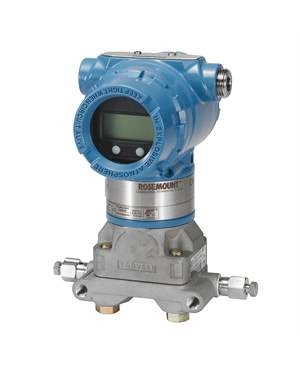3 Whats that Explain How Often You Should Calibrate Pressure Transducer
Brian Craig
June 22, 2017
A pressure transducer is a device, which converts the pressure applied to it into a measurable electrical signal. These transducers are used in applications, such as leak testing, altitude sensing, pressure sensing, depth or level sensing, and more. However, if these transducers are not calibrated over time, they may start showing false readings, which can affect their performance. Therefore, for a pressure transducer to perform well, and deliver precise output, requires timely calibration. Now, you may ask how often is it required to calibrate a pressure transducer? This post will discuss the time interval you need to maintain for calibrating your transducer.
What is the Frequency of Calibration of a Pressure Transducer?
This is a very common question that arises, when it comes to calibrating pressure transducer. Answers to the following 3 Whats will make it clear how often it is necessary to calibrate a pressure transducer:

The total probable error is calculated by taking into account the base accuracy of the transducer and probable effects of temperature errors and static pressure on the performance accuracy. If this value is high, then you need to calibrate your transducer.
The second most important factor to consider is operating conditions in which the transducer is expected to operate. Ambient temperature, humidity, and atmospheric pressure have a considerable impact on the working of the device.
Different applications require different accuracies. There are some applications for which transmitter calibration is not that much needed. However, some applications that have a direct bearing on the performance, efficiency, and safety of the plant, is where high accuracy is important. Thus, in such cases calibrating your device becomes vital.
- What is the Total Probable Error (TPE) of the Transducer?
- What are the Operating Conditions?
- Ambient Temperature: Ambient temperature variation can lead to unstable readings of the device, as well as premature component failure. The precision of the device is greatly dependent on temperature variations. Thus, you are required to take proper care and calibrate the device to minimize the effect of temperature on the accuracy of the transducer.
- Humidity: Similar to ambient temperature, humidity can affect the accuracy of a transducer. Vapor enters into the transducer housing, and damage sensitive components, thus leading to failure or wrong readings. So, it is required to calibrate the transducer in humid operating conditions.
- Atmospheric Pressure: The effect of atmospheric pressure on a transducer varies with the pressure range of the device. If the device has a wide pressure range, then the atmospheric pressure has a little effect on the output. On the other hand, in case of lower pressure range, the atmospheric pressure may have a big impact on the output. Therefore, you need to calibrate your transducer considering these conditions.
- What is the Optimal Performance Necessary for an Application?
Now that you have a proper knowledge about how often you should calibrate your pressure transducer, you can implement this in your organization. If you still have any queries related to the calibration of these transducers, you can always take help from experts. One such expert, who is well-known for transmitter calibration is The Transmitter Shop. The company provides calibration services adhering to the global industry standards.
Related Posts
- What are the Steps Involved in Calibrating Pressure Gauge?
- All Important Questions on Reconditioned Transmitters Answered
- Is Remanufactured Transmitter a Better Option than a New One?
- Differential Pressure Transmitters: How Do They Help in Flow Measurements?
- 3 Whats that Explain How Often You Should Calibrate Pressure Transducer
- Guidelines for Troubleshooting Pressure Transducers
- Learn How to Calibrate a Pressure Transmitter – II
- Learn How to Calibrate a Pressure Transmitter
- Know Three Interesting Uses of Pressure Transmitters
- Things to Check before Buying a New Pressure Transmitter
- A Look at Various Types of Industrial Transmitters – Part II
- A Look at Various Types of Industrial Transmitters Part I
- All Questions on Smart Transmitters and their Calibration Answered
- 3 Major Pressure Transmitter Technologies That Made the Device Popular
- An Unconventional Guide to Selecting the Right Pressure Sensor
- Factors To Be Considered While Differentiating $40 and $400 Pressure Transmitters
- Tips to Augment the Performance and Service Life of Pressure Transmitter
- Factors of Consideration When Choosing Pressure Transmitters
- 5 Most Popular Pressure Transmitter Technologies
- Tips to Improve the Performance of Pressure Sensors
- Factors to Consider When Choosing a Pressure Transmitter Manifold
- Safety Tips for Differential Pressure Transmitter Operation
- Impact of Shock and Vibration on Pressure Transducer
- Rosemount 3051S vs 3051C Transmitter – What is Your Choice?
- Rosemount 2088 Vs Rosemount 3051 – A Few Points of Differences Discussed
- Difference in Conventional Transmitters and Smart Transmitters
- How to Choose Diaphragm Seals for Your Application?
- How to Select Pressure Transmitter for Your Application?
- Remote Seals: Significance, Working Principle & Applications
- How Do You Calibrate A Flow Transmitter?
- What is Absolute Pressure Transmitter & how does it work?
- HART Communication Protocol: Overview, Working Principle, Benefits in Industrial Automation
- Absolute and Gauge Pressure Transmitters - Overview and Working Principle
- Flow Meter vs Flow Transmitter: Know the Difference
- How Do You Test for 4 to 20mA Signal in a Pressure Transmitter?
- Multivariable Transmitter: What Is It and How Does It Work?
- Pressure Transmitters vs. Pressure Transducers: Learn the Differential Characteristics
- Procedure to Calculate Accuracy of Pressure Transmitter Discussed
- Testing Pressure Gauges: Processes of Verification Test and Functional Test
- An Ultimate Selection Guide for Flow Transmitters
- The Benefits and Challenges of HVAC System Balancing
- Fluid Flow Isolation Techniques for Pressure Instrumentation
- Understanding Pressure Ranges and Units for Fluid System Monitoring
- Understanding the Impact of Pressure Fluctuations on Drying Performance
- Monitoring and Controlling Energy Production in Power Plants
- Common Challenges in Air Flow Measurement and How to Overcome Them
- Pressure Monitoring in Pump Systems: A Comprehensive Guide
- Exploring Density and Viscosity Measurement in Industrial Processes
- Pneumatic Pressure Controllers: A Safe Choice for Hazardous Areas
- A Practical Guide to Vacuum Measurement and Operation
- Complete Hydrogen Gas Safety and Measurement Solutions
- Steam Boiler Drum Level Measurement A Comparison of Control System Technologies
- Furnace Flame Sensor Faults Everything You Need to Know for Safe Operation
- Comparison between Multi Valve Manifolds Block Valves and Bleed Valves
- Pneumatic Pressure Controllers: A Safe Choice for Hazardous Areas
- Furnace Flame Sensor Faults Everything You Need to Know for Safe Operation
- Pneumatic Pressure Controllers: A Safe Choice for Hazardous Areas
- How Can Greenhouse Gas Emissions Be Reduced?
- A Practical Guide to Vacuum Measurement and Operation
- Understanding Electrochemical Detection: Principles, Techniques and Environmental Application
QUICK ENQUIRY







